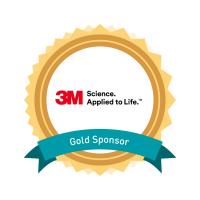Abstract
20 Years Experiences with the Sendai Surgery First
by Sugawara Junji
It has been exactly 20 years since our team experienced the first Surgery First (SF) case in 2004. This case was published in JCO in 2009 as the first case report on SF. Since then, many reports on SF have been published up to the present, but we decided to call our SF as Sendai Surgery First (SSF) because each team has different indications and treatment protocols. The most distinctive feature of SSF is the application of anchor plates in postoperative orthodontics. In this lecture, I would like to briefly discuss the evolution of SSF and the current protocol, as well as the following four features of SSF. 1) Wide range of indications: Many papers state that the choice of indication is very important in SF. They also point out that patients with moderate to severe crowding that make postoperative orthodontics difficult should be excluded from the indications. However, in SSF, three-dimensional movement of bimaxillary molars is possible using anchor plates, so such cases are unlikely to be contraindication. Currently, cases with very severe facial asymmetry and malocclusion of Angle's Class II division 2 in small mandibles are contraindications in SSF. 2) Low surgical intervention: In SSF, it is possible to predictably intrude the molars by applying anchor plates. Therefore, among the cases which maxillary impaction is necessary to improve open bite and VME, there are more than a few cases in which maxillary osteotomy can be avoided. Statistically, the rate of Two-jaw surgery in SSF is only about 25% of the total. 3) High percentage of non-extraction treatment: For example, in SSF targeting Class III, most cases show Class II denture in occlusion immediately after orthognathic surgery, but very few cases require bicuspid extraction for decompensation of maxillary incisors and crowding correction. The reason is that the maxillary molars can be moved distally by the anchor plates. 4) Detailing and finishing are relatively easy: Not only in SF, but in general multi-bracket treatment, detailing and finishing are not easy and take a lot of time. However, in SSF, anchor plates are making it easy to nicely adjust the mesiodistal positions of the molars. Therefore, detailing and finishing such as correction of the dental midline and achievement of rigid intercuspation can be completed in a relatively short period of time.
Learning Objectives
After this lecture, you will be able to know the indication and contraindications of Sendai Surgery First
After this lecture, you will be able to learn how to operate SAS biomechanics required for post-surgical orthodontics in Sendai Surgery First
After this lecture, you will be able to learn the up-to-date protocol of Sendai Surgery First

















